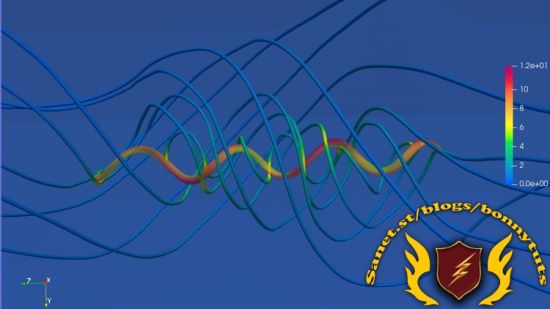
Published 6/2024
Created by Alberto Lolli,Azeddine Atrass
MP4 | Video: h264, 1280×720 | Audio: AAC, 44.1 KHz, 2 Ch
Genre: eLearning | Language: English | Duration: 21 Lectures ( 2h 22m ) | Size: 981 MB
mathematical modeling, finite element method, numerical simulations, FEniCS, computational fluid dynamics
What you’ll learn:
Real-world problem modeling: learn to translate intricate real-world physical problems, especially in fluid dynamics, into mathematical models for simulation.
Effective FEniCs utilization: master the usage of FEniCs as a powerful tool for automating variational formulations, discretizing equations, and solve PDEs.
Create a portfolio of projects that showcase your ability to model and simulate intricate phenomenon using Python.
Post-processing: acquire skills to interpret and extract meaningful insights from simulation data employing Paraview.
Domain generation: learn to create simple CAD geometries, mesh them, and interpret quality parameters, laying the foundation for precise simulations.
Problem-solving skills: understand finite element method scientifically and apply it to address practical engineering/scientific challenges.
Requirements:
Calculus I,II
Numerics
Basic programming skills
Fluid dynamics
Description:
Unlock the potential of numerical techniques in fluid dynamics through our comprehensive course on the Finite Element Method (FEM). Tailored for engineers and students aiming to deeply comprehend both the theoretical foundations and practical implementation of FEM, this course takes participants on a journey from fundamental concepts to hands-on coding using exclusively open-source tools. Furthermore, it expertly guides participants through the crucial process of interpreting and visualizing simulation data.Theory Fundamentals: The course commences with establishing a robust foundation in the mathematical theory underpinning finite element methods. Participants will delve into variational formulations, weak forms, and discretization techniques for partial differential equations (PDEs) commonly encountered across diverse engineering fields.Element Types: A comprehensive exploration of distinct finite element types and their relevance to fluid dynamics issues awaits. The course delves into shape functions, interpolation, and numerical integration techniques, seamlessly bridging the gap between continuous mathematics and discrete simulations.Mesh Generation: Participants will gain insight into the principles underlying the creation of unstructured meshes. Moreover, the course examines the significance of mesh quality and its profound influence on simulation accuracy.Solving PDEs: A thorough understanding of solving intricate PDEs governing several physical situations is imparted. The course delves into key techniques like Galerkin’s method, facilitating the transformation of complex PDEs into solvable linear systems.FEniCS Introduction: A highlight of the course is the revelation of the powerfull open-source FEniCS framework as a robust tool for implementing finite element methods. The curriculum empowers participants to harness its capabilities, automating variational formulations, streamlining discretization processes, and proficiently addressing PDEs.Implementation Project: Participants will be immersed in different hands-on projects, culminating in the development of their own fluid dynamics solver using FEniCS and Python. Beginning with simpler problems, participants progressively advance to simulating real-world fluid flow scenarios.Simulations via Ubuntu: Running simulations via the console is well-suited for remote computing and cluster environments, where you can submit jobs to remote servers or clusters for parallel processing. In the course, you will learn how to use Ubuntu console to run your script remotely and become familiar with this type of environment.Post-Processing: Mastery of extracting profound insights from simulation data is a key point. Participants will acquire the skills to effectively visualize and analyze velocity profiles, pressure distributions, and other important fluid dynamics metrics.Note: The course is meticulously designed around open-source software, guaranteeing that all participants can seamlessly access and employ the tools without encountering any cost-related barriers.
Password/解压密码www.tbtos.com
转载请注明:0daytown » Physical modeling and simulation from scratch in python